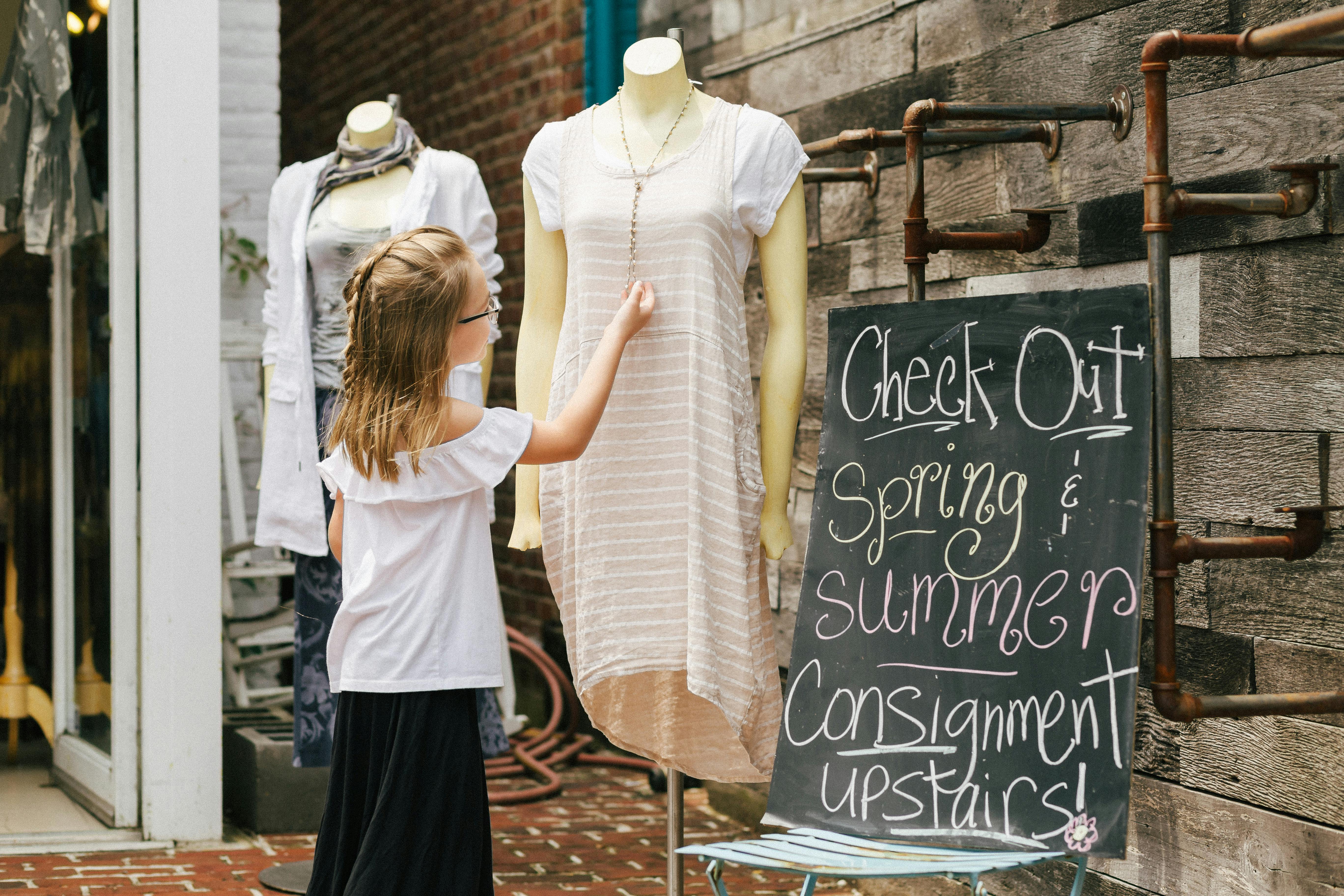Wondering how to start a consignment shop? Follow these steps
Opening a consignment shop can be a great way to turn your passion for vintage or unique items into a profitable business. And now is the perfect time to do so. According to thredUP and GlobalData:
The U.S. secondhand market is expected to reach $70 billion by 2027.
Online resale is expected to grow 21% annually over the next five years, reaching $38 billion by 2027. It's the fastest-growing resale segment.
Smart business owners start with a strong business plan
If you've ever asked yourself, "How do the best consignment stores work?" know that a successful consignment business begins with a solid business plan. The time you invest in creating this document saves you money and keeps you on track for the long haul.
Entrepreneur.com suggests that starting a consignment clothing store requires an initial investment of $3,000 to $10,000. However, it takes at least two years to work out all the details and get the business running smoothly.
To start your own consignment store successfully, consider your business structure, target market, consignment policies, projected sales, and cash flow. You should align your goals with your projected sales to determine what steps you need to take to achieve them.
You will also need to make a list of start-up expenses, including the cost of shelving, tags, bags, a cash register, signage, and inventory. It is important to estimate how long your business can operate without additional funding so that you can give your store a fair chance of turning a profit.
The Small Business Administration has helpful resources that you may find useful for starting a consignment business.
1. Research the neighborhood
To choose a neighborhood, visit city hall and gather information on income, age, marital status, etc. It's important to be familiar with the area. You can make sure there's a market for your type of store in the area.
Look for gaps in the market, current trends, and successful vendors.
Does children's clothing resale dominate the industry?
Is there room for a furniture provider?
What about luxury handbags?
This will give you an idea of what items to sell, how to price them, and what to expect from the competition.
Remember, it truly is all about location. If your market has a lot of secondhand shops or a large, well-known shop will be in direct competition, think about ways to make your store unique. Look for a location with high foot traffic surrounding your target market. Implementing a comprehensive marketing strategy is important, but this approach can help you attract new customers faster.
Consider talking to the competition and contacting similar businesses in other cities or states. If you aren't comfortable talking to a competitor, at least browse their store and marketing materials.
2. Choose a business model
There are two primary business models in the resale market: buy outright and consignment.
In the buy outright model, the seller receives payment first for their item. Then, the reseller takes over and sells it.
In the consignment model, the seller retains ownership of the item. However, the item is placed in the reseller's store or website for sale. The reseller takes a percentage of the final sale price as their commission.
The key difference between these two models is who assumes the risk and responsibility of selling the item. With buy outright, the reseller takes on the risk and responsibility, while with consignment, the seller retains it. Both models have their advantages and disadvantages, and it's up to the seller to decide which one is best for them.
Of course, there are other factors to consider. Will you charge extra for large items? What about credit card fees? Will you pass those on? It’s common to pass these on to consignors when appropriate. Before meeting with your vendors and consignors, you will need answers to questions like this.
This is one area where choosing a consignment store point of sale, like SimpleConsign, really matters. The ability to add and configure custom fees adds to your bottom line. For a list of fees to consider, check out 10 Ways to Manage Your Bottom Line.
3. Decide whether you want to sell online in addition to your physical location
Keep in mind that the needs of a brick-and-mortar store are different from those of an online only consignment shop. If you choose to start an online consignment store, be sure to account for extra expenses like packing and shipping costs. You'll also want a dedicated space for packaging and sending out items.
You can take a hybrid approach to find what works for your business. SimpleConsign's Shopify integration makes this easy.
4. Choose a consignment store software
Choosing the right consignment POS provider is a critical decision for your business. The consignment software is the backbone of your operations and has a direct impact on your bottom line. It enables efficient transactions, accurate inventory management, and seamless customer experiences.
A reliable and user-friendly resale POS provider can streamline your business processes, improve customer service, and increase your consignment sales. On the other hand, a subpar consignment POS system can lead to costly errors, frustrated customers, and missed opportunities. Therefore, selecting the right consignment store software is crucial to the success and growth of your business.
5. Design an attractive store
Often, shoppers form lasting impressions of your consignment shop based on the layout of your store. No matter how well-stocked the store is, customers will find another place to shop if it isn't clean, bright, organized, and attractive.
To enhance your sales, visit your preferred retailers and observe how they display their merchandise. To attract customers, place the seasonal must-have items at the front of the store.
You can keep the sale products and everyday items at the back. For smaller items that cost less than $10, it’s better to display them next to the register to increase impulse buying. These small purchases can add up to significant sales every month.
It’s also crucial to change the way you display your merchandise to make it feel fresh and new. You can check out "Retail Store Layout Designs that Increase Your Sales" for ideas on store layout designs.
6. Acquire inventory with a clear consignment agreement
To be successful in selling consignment products, you must attract consignors with quality merchandise. Don't open the doors before the shelves are full. Shoppers will hesitate to come back. However, if you fill your shelves with inventory shoppers aren't interested in, they won't return either.
Knowing your neighborhood and its demographics means you'll know what merchandise to offer. Scour yard sales, auctions, estate sales, business liquidations, and thrift shops for good deals. Learn to bargain and negotiate. These skills will be needed when interacting with consignors.
7. Seek community support
Consider reaching out to your community for support by teaming up with other businesses in your neighborhood. You could offer cross-promotional services and discounts to customers.
For instance, a clothing store could collaborate with a dry cleaner or tailor, while a formal wear shop could sell original accessories created by an aspiring jeweler.
Similarly, a children's consignment store should consider partnering with a local photographer for a customer appreciation sale, while a furniture shop could benefit from a strong relationship with a moving company.
8. Think outside the resale box
To become a successful consignment business, look for every opportunity to build your vision. Join The Resale Network, our nationwide community of 2500+ resale professionals and enthusiasts alike, that come together, both online and in person, to celebrate all things secondhand.
You can also join organizations such as the National Association of Resale Professionals (NARTS). Get involved with your local Chamber of Commerce. Find ways like Shop Small Saturday to encourage your community to shop locally. Do your homework, and you will be successful.
Ready to open your business?
Schedule a personalized demo & try SimpleConsign free for 15 days.


